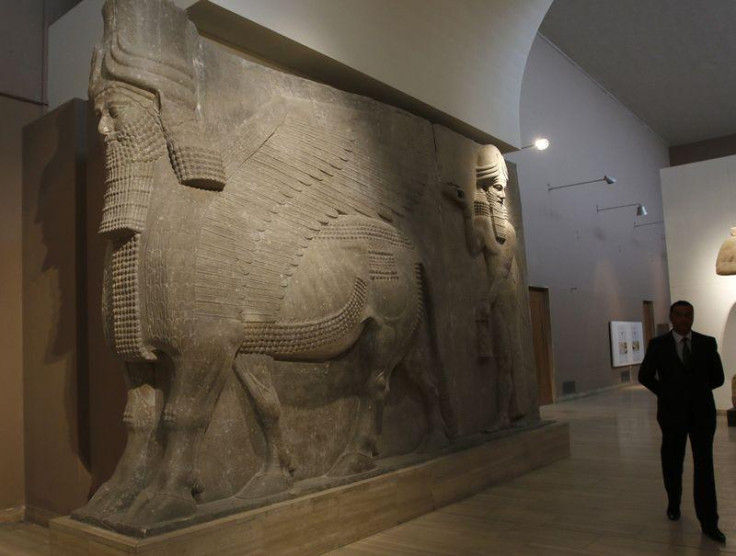Isis plunders ancient Iraqi city of Khorsabad known for massive human-headed bull statues

Islamic State militants have desecrated the 2700-year-old city of Khorsabad, it has been confirmed, adding to a campaign of destruction that has already been waged on the cities of Nineveh, Nimrud and Hatra.
The ancient Iraqi city is famous for its statues of human-headed winged bulls.
"The city walls were razed, and some elements of the temples, but we don't know the exact extent [of the damage]," said antiquities director Qais Rasheed. "Looting took place, and then the razing."
Rasheed said in the northern province of Nineveh alone there were 1,700 archaeological sites under IS control, besides Iraq's third largest museum at Mosul, desecrated by the militants two weeks ago.
"We ask the whole world, and primarily the international coalition, to activate its capabilities, because every day that passes, we have new losses," said Iraqi Tourism and Antiquities Minister Adel Shirshab.
IS areas of control cover parts of Iraq and Syria where ancient Assyrian empires built their capitals, the Greco-Roman civilisation flourished and Muslim and Christian sects co-existed for centuries, reports Reuters.
The group has ruthlessly set about destroying historic temples, shrines, manuscripts statues and carvings as a demonstration of its disdain for any other religion or theology other than the Sunni Islam it practices.
Loot sold to fund IS rule
Officials say it has also looted widely, selling artefacts to help fund its rule.
In this regard, Rasheed sought help in returning looted items finding their way to auction houses abroad.
Iraq has asked the US-led coalition to deploy its aerial power to defend the country's cultural heritage.
But US General Martin Dempsey, chairman of the joint chiefs of staff, said in Baghdad that the military priority was focused on populated areas ruled by IS and not remote antiquity sites.
Iraqi authorities have expressed disappointment over the failure to procure satellite imagery of Hatra and Khorsabad to assess the scale of the damage.
"They say they are working on getting pictures. How? Is it hard for the Americans to get satellite photos?" asked Rasheed on the sidelines of a meeting with foreign ambassadors and the UN to set out the scale of the damaged wrought by IS and press for a stronger international response.
Huge stone carvings of winged bulls with bearded human faces were shipped from Khorsabad and other Assyrian cities in Iraq to France, Germany, Britain and the US in the 19th century.
But those were just a fraction of the Khorsabad treasures, claimed Rasheed.
French and English excavations at Khorsabad covered only 10% of the vast city, he said.
© Copyright IBTimes 2025. All rights reserved.





















